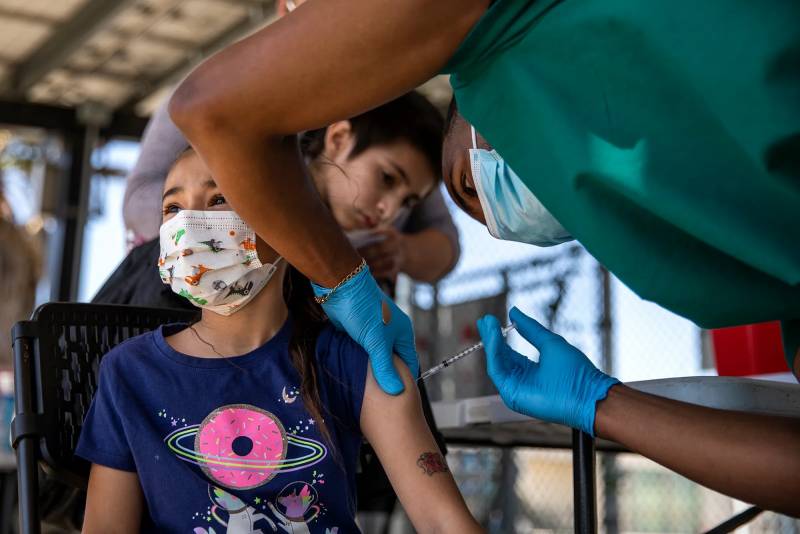“If a better way to solve it is access without the acrimony of mandate, that is fine,” he said. “The point isn’t to disagree, it’s to get to a point where we have public health protections.”
Pan’s bill was one of eight aggressive COVID-19-related bills introduced as part of a slate from the Legislature’s vaccine working group, made up of Democratic lawmakers. Among the bills still alive in the Legislature are proposals that would punish doctors who share misinformation, require schools to continue regular COVID testing, and change how the state’s vaccination registry works. Also still in play: a bill that would allow 12- to 17-year-olds to get vaccinated without parental consent.
In August, the COVID vaccine received full approval from the FDA for people 16 and older. Children as young as 5 also can receive it, but only under the FDA’s emergency use authorization. About two-thirds of 12- to 17-year-olds in California have been vaccinated, but the numbers are much lower for kids 5 to 11, with only about one-third vaccinated.
Citing the low COVID vaccination rate among younger children, Pan said a mandate is not a priority until the state can make the vaccine more accessible. He said that in his experience, as a pediatrician, when parents ask about vaccinations they want to see their child’s doctor. But many doctor’s offices don’t offer the COVID vaccine and have instead been referring families to drug stores or vaccination sites that are often not child-centric.
“The challenge is that we are not getting vaccines into essentially the places where people normally get vaccines for their children,” he said, referring to pediatricians’ offices. “We still have a long way to go.”
A Berkeley IGS poll released in late February found that two-thirds of California voters supported requiring the COVID-19 vaccine for K-12 students. But there is a big split along party lines: Democrats and liberals overwhelmingly support a mandate while only about a quarter of conservatives and Republicans do.
Among parents, two-thirds said they felt having their kids vaccinated was essential or important, while 26% percent said it was “either not too or not at all important.” This question did not address the mandate.
Pan’s legislation was the second of the working group’s bills to be sidelined by its original author. A proposal to require all people who work, including contractors, to be vaccinated also was pulled.
Critics have been pushing back, arguing that the bills are burdensome and infringe on health and privacy rights — and no bill was more controversial than Pan’s. Many parents who opposed it said that parents should get to choose whether to vaccinate their children, especially when the vaccine does not fully prevent transmission and it’s still unclear how long it remains effective against the virus.
“We did not feel it was the appropriate policy for children with respect to COVID-19 at this time,” said Christina Hildebrand, head of A Voice for Choice. The group advocates for parental choice and has worked since 2015 to keep personal belief exemptions for various vaccines in place. She points to the low rate of COVID vaccination among 5- to 11-year-olds as a reason to hold off on a mandate.
“Those parents have had ample opportunity to get their children vaccinated, but the parents are hesitant,” she said.
Pan said it’s difficult to require something that two-thirds of young children have yet to receive. “Mandates are good at getting you to that final bit when we are at 80% and have to get to 90, not when you are below half,” he said. “If you are that far behind, there’s a reason. Some of it is people have questions and want to get them answered, and they want to hear from the person they have been going to for a long time to get vaccinated.”
Pan, though, said his bill is certainly not dead. He intends to watch vaccination rates and said it could be something he brings back later.
Madrid, the GOP consultant, said the bills signal the possibility of future vaccine mandates as the world becomes more globalized and pandemics happen more frequently.

